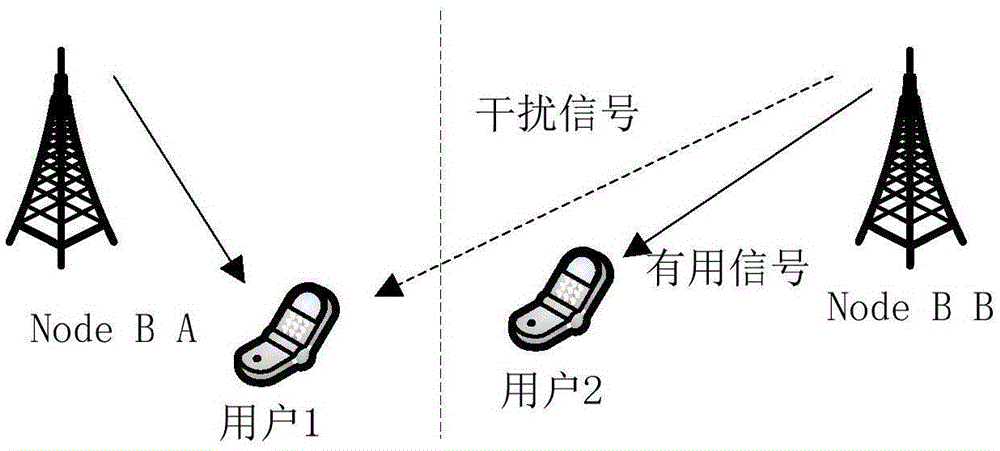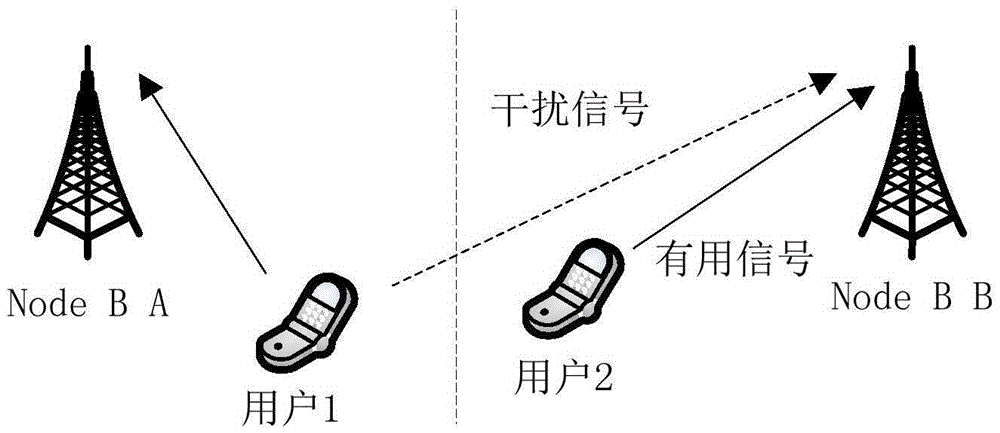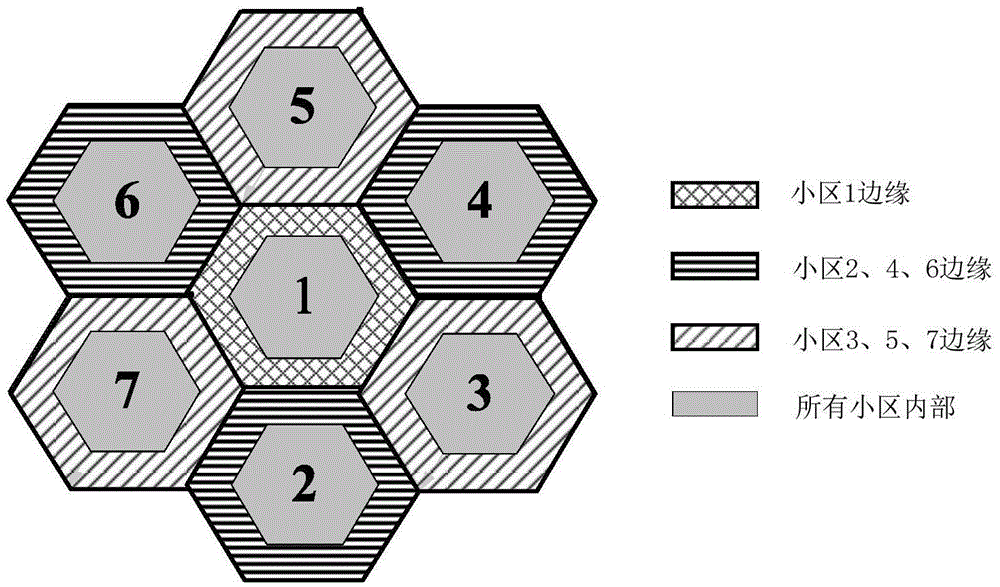LTE (Long Term Evolution) system interference coordination method
A coordination method and technology of system interference, applied in transmission system, radio transmission system, diversity/multi-antenna system, etc., can solve the problem of poor multi-user diversity effect of the system, unable to obtain the best system performance, unable to obtain the best system performance, etc. question
- Summary
- Abstract
- Description
- Claims
- Application Information
AI Technical Summary
Problems solved by technology
Method used
Image
Examples
Embodiment
[0114] Assume Figure 6 The middle cell 1 is a reference cell. There are 3 sectors in the cell, 12 users in each sector, and 24 RBs (Resource Blocks) in the cell. Each RB contains 12 consecutive subcarriers in the frequency domain. The carrier width is 15kHz, and the RB frequency interval is 180kHz. That is, a time slot adopts video service, and the service data volume is 64kb / s. Assume that after user classification in a certain sector of the cell, there are 7 edge users and 5 central users.
[0115] Such as Figure 12 Shown are the effect diagrams of cells 1, 2, and 3 after initial allocation of frequency resources. For cell 1, if the resources in the figure do not identify user types, it means that the resources are idle and not occupied by users. For cells 2 and 3, part of the user type identifiers are omitted. Among them, the 1st to 8th RBs are the legal frequency ranges of edge users in cell 1; the 9th to 16th RBs are the legal frequency ranges of edge users in cell ...
PUM
 Login to View More
Login to View More Abstract
Description
Claims
Application Information
 Login to View More
Login to View More - R&D
- Intellectual Property
- Life Sciences
- Materials
- Tech Scout
- Unparalleled Data Quality
- Higher Quality Content
- 60% Fewer Hallucinations
Browse by: Latest US Patents, China's latest patents, Technical Efficacy Thesaurus, Application Domain, Technology Topic, Popular Technical Reports.
© 2025 PatSnap. All rights reserved.Legal|Privacy policy|Modern Slavery Act Transparency Statement|Sitemap|About US| Contact US: help@patsnap.com



